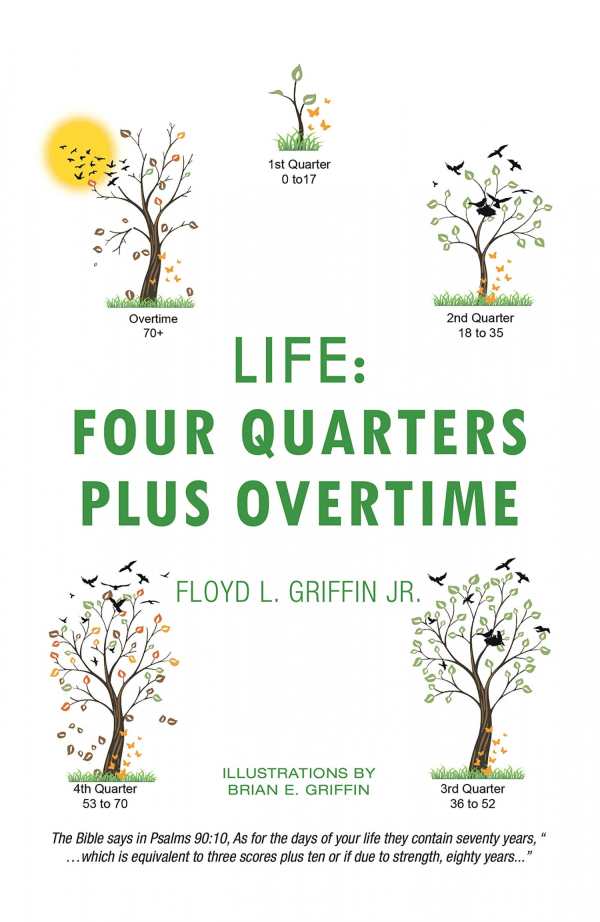
Life
Four Quarters Plus Overtime
Life’s idealism about growing and aging is meaningfully tempered as it considers the realities of racism.
Floyd L. Griffin Jr.’s engaging social science book Life considers the impact of race in America through the lens of human development.
Presenting the typical human lifespan in sports terms, as made up of four “quarters” plus “overtime,” each life segment is examined and made to correspond to different developmental tasks and challenges. The book argues that a person’s first quarter covers conception to early adolescence; for this age range, it focuses on education and black students. Here, the second quarter covers later adolescence and early adulthood, in which issues of identity, relationships, and marriage arise. The midlife quarter is discussed in terms of growth and purpose, and late adulthood is about coming to grips with aging. “Overtime” comes in when people live into their seventies and concerns death and dying.
Organized around each of these quarters, the text begins each section with a brief introduction that sets a hopeful tone for its work. These introductions function like pregame pep talks and help to define each stage’s themes, using a mix of clichés and strong observations, as with the midlife question of providing something of “real value.” Such considerations ground the material well.
Drawing on a broad range of sociological studies, psychological theory, and cultural material, the book supports its theories from an African American perspective in particular. It stresses the importance of education early on and notes that black students are further hindered by negative stereotypes and a disproportionate level of college loan debt. The text alludes to off-ramps, including a cradle-to-prison pipeline, but doesn’t examine them closely; instead, it centers a more idealistic representation of human development.
Scholarly and well footnoted, the text’s tone is tempered by comments made in everyday language, as with an argument that, while the legacy of enslavement remains “etched in the souls of black people,” so is the knowledge of God and a memory of the “ancient ones.” The text shines most when it incorporates apt wisdom from sources including the Bible, history, and African proverbs and in its delivery of advice like “don’t tear down a fence until you know why it was put up.”
A well-argued psychological and sociological text, the book paints a complicated picture of life as a black person in America. The breadth of material it draws upon, and its unwillingness to settle for easy answers, make it compelling. Life’s idealism about growing and aging is meaningfully tempered as it considers the realities of racism.
Reviewed by
Jeremiah Rood
Disclosure: This article is not an endorsement, but a review. The publisher of this book provided free copies of the book and paid a small fee to have their book reviewed by a professional reviewer. Foreword Reviews and Clarion Reviews make no guarantee that the publisher will receive a positive review. Foreword Magazine, Inc. is disclosing this in accordance with the Federal Trade Commission’s 16 CFR, Part 255.
